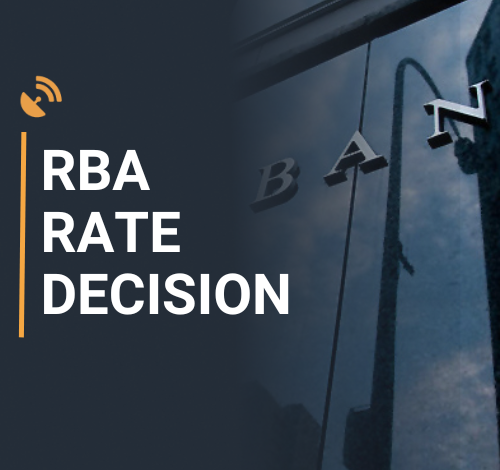Australia Interest Rate Decision Preview: RBA expected to leave rate cuts off the table

- Interest rate in Australia set to remain steady at 4.35%.
- Reserve Bank of Australia Governor Michele Bullock not expected to change the tone.
- The Australian Dollar is poised to extend its slump against the US Dollar.
The Reserve Bank of Australia (RBA) will announce its monetary policy on Tuesday and is widely anticipated to keep the Official Cash Rate (OCR) unchanged at a 12-year high of 4.35%.
The RBA has changed the number of monetary policy meetings in 2024, reducing the number of the Board’s meetings from eleven to just eight times a year. Officials decided to cut back the number of meetings so the Board could have more time to assess economic developments.
Incoming data since the December decision has shown inflation retreated sharply while growth remains tepid, justifying market expectations of a no-chance in the OCR.
Reserve Bank of Australia to stand pat as inflation eases, growth weakens
With the OCR seen steady at record highs, the focus will be on the accompanying statement and Governor Michele Bullock’s press conference. Back in December, the RBA statement noted: “Inflation had continued to decline but remained high. Wages growth had reached 4 per cent a little sooner than had been expected but the staff judged that wage growth was unlikely to rise much further. Output growth had continued below trend and the labour market was tight but easing gradually. Members agreed that financial stability considerations were not a constraint on monetary policy at the current meeting.”
Australian policymakers maintained the wording related to additional rate hikes amid expectations inflation would remain above target for a prolonged period. However, the latest figures were quite encouraging. The Consumer Price Index (CPI) rose 0.6% in Q4, easing from 1.2% in the previous quarter and below the 0.8% expected, according to the Australian Bureau of Statistics (ABS). The central bank’s favorite gauge, the RBA Trimmed Mean CPI rose 0.8% in the same period and 4.2% from a year earlier, the latter easing from 5.1% in Q3. Finally, the Monthly Consumer Price Index was up 3.4% YoY in December after printing at 4.3% in the previous month.
The RBA then has easing inflation but also softening economic activity as the base case for the January decision. In such a scenario, most economists expect no changes to the statement wording, with policymakers maintaining the door open for additional hikes if needed. Rate cuts will most likely remain out of the table. Money markets are not looking into a pivot in monetary policy in the first half of the year.
The Australian Dollar (AUD) may come under selling pressure if policymakers choose a more dovish tone to express their view of the future of monetary policy. Yet retaining the hawkish stance may not give fresh impetus to the Aussie, as lately, investors prefer to bet on rate cuts and ignore central bankers.
Governor Bullock has warned about the upside risks of inflation and may ease the tone there, but given the labor market remains tight, she most likely will maintain the cautious tone. Recent data showed a sharp slide in the number of employed individuals, with the monthly report indicating a 65.1K decline in job positions in December, while the Unemployment Rate held steady at 3.9%. Also, the Participation Rate slid from 67.3% to 66.8%.
How will the RBA interest rate decision impact AUD/USD?
The AUD/USD pair trades at its lowest since last November on Monday, amid broad US Dollar demand. The Australian Dollar (AUD) has fallen against its American rivals in the last five weeks, and started this one by extending its slump. The pair trades below the 0.6500 threshold, and in the long run, it has room to extend the slide.
Valeria Bednarik, Chief Analyst at FXStreet says: “The bearish momentum is evident in the daily chart, as the pair finally slid below its 100 SMA (Simple Moving Average) for the first time since mid-November, and after buyers battled throughout January to defend the area. At the same time, the 20 SMA accelerated its decline above the longer one, reflecting persistent selling interest. Finally, technical indicators suggest bears are willing to keep selling, as per aiming south within negative levels.”
Furthermore, Bednarik notes: “The current price zone seems lacking a relevant level that could provide support. Sellers will be looking for a downward extension towards 0.6450, aiming then to reach the 0.6370/80 area. Given the US Dollar’s broad strength, AUD/USD could extend its slide towards 0.6300/30 following the event. To the upside, the level to watch is the aforementioned daily 100 SMA, currently at around 0.6530. Once above the latter, the recovery could continue towards 0.6600, where sellers are expected to jump back in.”
The RBA may adopt a more dovish tone in its next statement, which, combined with lower inflation forecasts, could put further pressure on the Aussie.
Economic Indicator
Australia RBA Interest Rate Decision
The Reserve Bank of Australia (RBA) announces its interest rate decision at the end of its eight scheduled meetings per year. If the RBA is hawkish about the inflationary outlook of the economy and raises interest rates it is usually bullish for the Australian Dollar (AUD). Likewise, if the RBA has a dovish view on the Australian economy and keeps interest rates unchanged, or cuts them, it is seen as bearish for AUD.
Information on these pages contains forward-looking statements that involve risks and uncertainties. Markets and instruments profiled on this page are for informational purposes only and should not in any way come across as a recommendation to buy or sell in these assets. You should do your own thorough research before making any investment decisions. FXStreet does not in any way guarantee that this information is free from mistakes, errors, or material misstatements. It also does not guarantee that this information is of a timely nature. Investing in Open Markets involves a great deal of risk, including the loss of all or a portion of your investment, as well as emotional distress. All risks, losses and costs associated with investing, including total loss of principal, are your responsibility. The views and opinions expressed in this article are those of the authors and do not necessarily reflect the official policy or position of FXStreet nor its advertisers. The author will not be held responsible for information that is found at the end of links posted on this page.
If not otherwise explicitly mentioned in the body of the article, at the time of writing, the author has no position in any stock mentioned in this article and no business relationship with any company mentioned. The author has not received compensation for writing this article, other than from FXStreet.
FXStreet and the author do not provide personalized recommendations. The author makes no representations as to the accuracy, completeness, or suitability of this information. FXStreet and the author will not be liable for any errors, omissions or any losses, injuries or damages arising from this information and its display or use. Errors and omissions excepted.
The author and FXStreet are not registered investment advisors and nothing in this article is intended to be investment advice.



